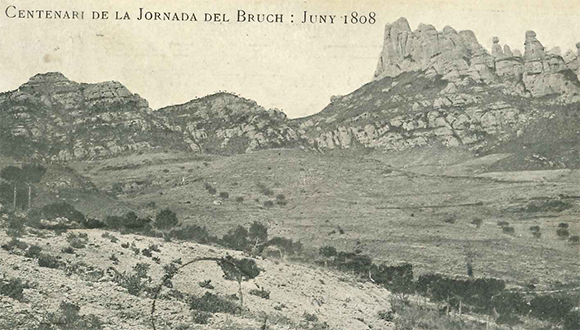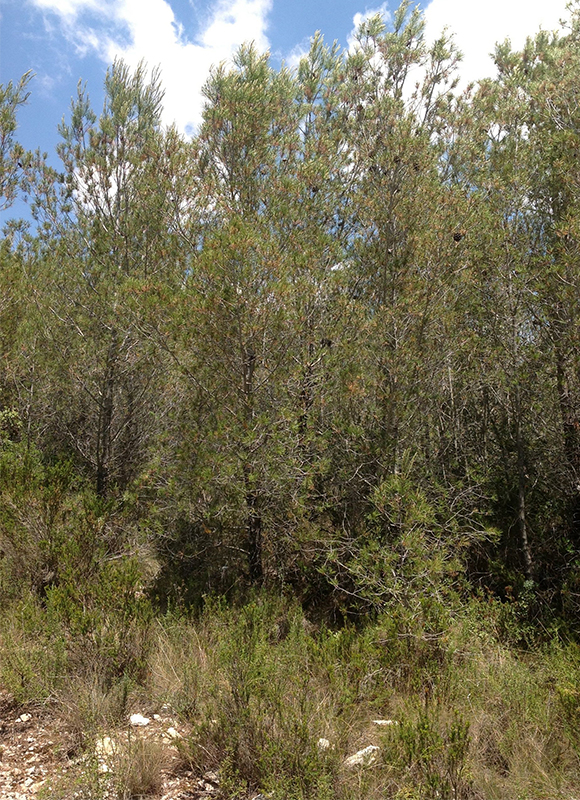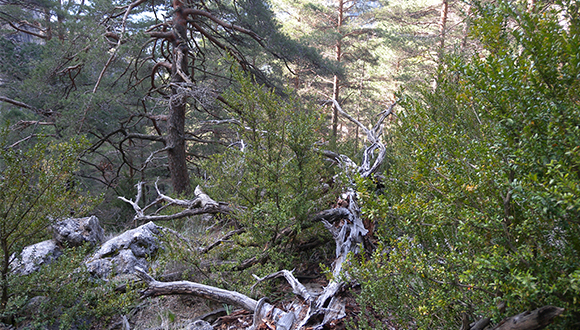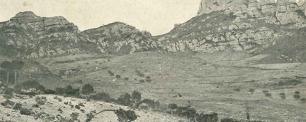Woodlands in their labyrinth: forest management and biodiversity conservation
The forth post of Francisco Lloret's section Festina Lente. In this one he explains different dimensions of combining forest management with biodiversity conservation.
![]()
To Jordi and Lluís.
Annie Proulx has recently published a book ("Barkskins"), in which she describes the destruction of the forests of the east coast of North America since the arrival of Europeans. It uses two lineages of settlers that intertwine with each other and with native populations to illustrate two ways of relating to the forest. One exploits the wood and the related goods following the capitalist model. The other approaches the forest in an intuitive way, recognizing a personality of its own.
In the last generations of these lineages, the characters become aware of the value of conserving the forests, either to be able to maintain their exploitation or to safeguard such personality. The story reflects the crossroads in which we find ourselves, given the multiple interests, whether private or common on forests. It is logical that public administrations, such as the Government of Spain, the Generalitat of Catalunya or the Basque Government, aim to develop biodiversity conservation strategies that consider this multiplicity of uses. Or that European projects explore ways to make forest management compatible with biodiversity conservation. Or that academy discusses about the positive effect of forest diversity on productivity.
The first approach that comes to mind is to figure out what the natural environment would be like if we had not altered it. Or, to ask us how the environment was before the deep transformations of the last centuries.
In a world of accelerated change, the first approach that comes to mind is to figure out what the natural environment would be like if we had not altered it. Or, to ask us how the environment was before the deep transformations of the last centuries. But back to the past does not help much to solve the problem. First, because ecological processes are historical and time does not go back. The characteristics of a state at a given time - the forest - will determine future features of the system. Second, because history is full of cases where traditional cultures overexploited natural resources. Without undervaluing those cultures that preserved natural resources for generations to come, the factor that most probably contributed to conserving the environment was the lack of technology that would allow the extraction of natural resources more intensely.

In the absence of historical references, much less in territories such as Europe with a very long history of human activity, which is the model to consider a state of conservation satisfactory? Biodiversity, understood in all its complexity - not just as a catalog of genotypes or species - corresponds to the structure of biological systems in their different levels of organization - genetic, population, ecosystem - with their elements connected in space and time. Biodiversity provides certain qualities to ecological systems such as homeostasis or efficiency. Some of these qualities are particularly useful to human society in terms of availability and reliability of essential resources, often with a clear translation to public health. This is what has come to be called ecosystem services. In other words, biodiversity has a functional value, associated with the processes in which it plays an important role.
Biodiversity is a patrimonial value, analogous to the set of works of art, crafts or industry that we have inherited from our ancestors.
Saving these processes as a whole brings benefits to society. But biodiversity also has an intrinsic value because it is the result of biological evolution. It is a patrimonial value, analogous to the set of works of art, crafts or industry that we have inherited from our ancestors. These objects are often quite useless for an everyday use. But they are both emotional and socially valuable as they provide cohesion to human societies. Similarly, biological heritage deserves to be conserved as we share biological inheritance with it and it provides feelings of emotion and identity. Both types of values are connected: many functional properties of ecosystems are associated with a variety of biological forms or species, recognized as heritage. Preserving biodiversity is like paying for an insurance policy that allows natural systems to continue operating and providing their services in the future.
However, the conservation of the functional and heritage values of biodiversity can sometimes conflict. Conservation of a species may need to alter the natural dynamics of a forest, keeping it in a successionally early stage. In essence, these conflicts are not different from those encountered when managing forests for multiple objectives, such as the extraction of marketable timber or the preservation of values associated with biodiversity. Once we have overcome the temptation to establish criteria or priorities related to past times that will not return —and do not necessarily provide the services we are looking for today— we are able to establish criteria or priorities based on the functional meaning of biodiversity. Some of these priorities may be compatible with the commercial use of forests, more or less similar to traditional practices. Others will be compatible with recreational use providing added value for some people.
The lack of intervention in an artificially-grown forest does not necessarily provide elements of naturalness, at least in the short or medium term.
Thinning opens spaces in the canopy of a forest, rapidly mimicking the reduction of density that occurs throughout the succession, also facilitating the incorporation of new genotypes. Alternatively, the lack of intervention in an artificially-grown forest does not necessarily provide elements of naturalness, at least in the short or medium term. This can be seen in densely, species-poor, planted groves, heavily constrained by high competition.

Of course, the intensity of human intervention is important and greatly increases the risk that the regulatory services provided by ecosystems will no longer function efficiently. This is what happens, for example, when soil losses occur. On the other hand, in our regions it may be extremely difficult to find ecosystems without human interference. So, pristine forests merits conservation efforts due to their heritage value, their value for scientific knowledge or their functional properties. After all, it will be easier and faster to return a mature forest to an initial successional stage than the reversal.
The society will realize that conflict is not the only option, and that we are able to take rational decisions.
We should use the synergies between different management or conservation objectives or priorities when the same action provides several benefits. In this way, the society will realize that conflict is not the only option, and that we are able to take rational decisions. However, conflicts are not uncommon when there are different values associated with environmental and biodiversity management. In many cases, these conflicts are alleviated by taking advantage of the territory's own extension and heterogeneity. It is not necessary nor convenient to act in the same way throughout the whole territory. A sufficiently large region allows different benefits to be distributed in space, for example those that provide different successional stages occurring across the landscape. We should obtain the maximum benefit of the different uses according with their distribution in the region. For instance, we have mathematical tools that allow us to calculate the relationship between costs and benefits of different types of forest management. These procedures, for instance, have been applied to assess the compatibility of timber production and wildlife conservation in North American forests.

The 'multifunctionality' of forests was already recognized time ago. In addition to obtaining wood, paper or biofuels, forests provide many other benefits. This idea is clearly connected to ecosystem services. But the big problem is that the different benefits or services are not measured in the same currency. It is relatively easy to put a price to wood-related goods. But it is much more complicated to put a price on the pleasure of walking in a forest or to preserve some species that very few people are able to recognize. There are disciplines and books devoted to these economic conversions, but laws of the market do not entirely apply to these estimations. They tend to carry some degree of arbitrariness and are not easily accepted by everyone. This is a typical case of environmental externality. Although the economic value of consumer goods is also subjected to distortions and uncertainties, it seems that we have become accustomed to them. Therefore, there is no reason why society should not end up getting accustomed to the limitations of the valuation of externalities. The earlier these assessments are standardized, the earlier the different uses of forest ecosystems will move towards compatibility.
So, it is not an easily task to find the Theseus that helps forest to leave the labyrinth in which we have put it. At least we can accompany forest and apply our understanding to make compatible the many values it treasures.
In our culture, the forest has historically been an inhospitable environment, which ceased to be so with the technology that accelerated its transformation. Simultaneously forest was praised by a romantic vision that tried to counteract its deterioration as wilderness became scarcer. This vision has converged with our knowledge and perception of forest services. In our regional context, the loss of economic value has involved important changes in forest. The result is that it often does not provide all the benefits we would wish. So, it is not an easily task to find the Theseus that helps forest to leave the labyrinth in which we have put it. At least we can accompany forest and apply our understanding to make compatible the many values it treasures.







